- July 26, 2024
-
-
Loading

Loading
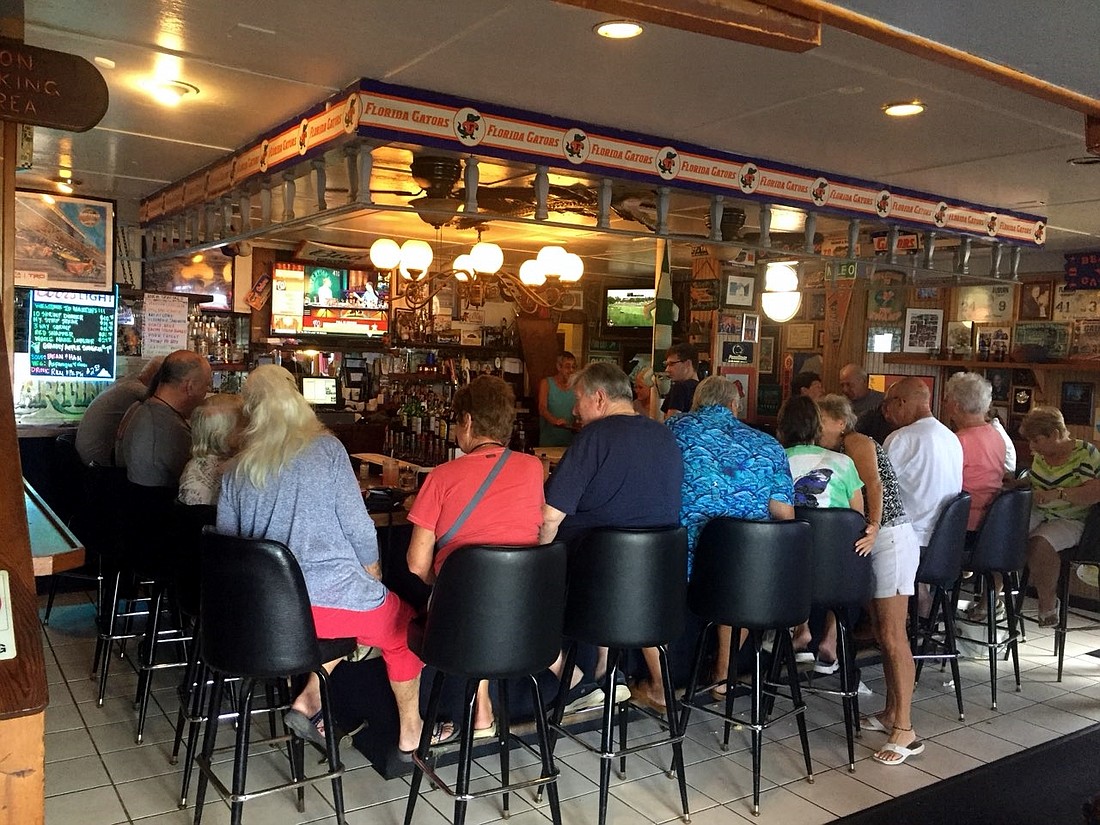
After Martin’s Restaurant & Lounge located at 2000 S. Ocean Shore Blvd., Flagler Beach was sold late in 2021, the author purchased the more than 80-year-old unusual looking eight-domed chandelier, which hung in the bar area, from the establishment’s new owner.
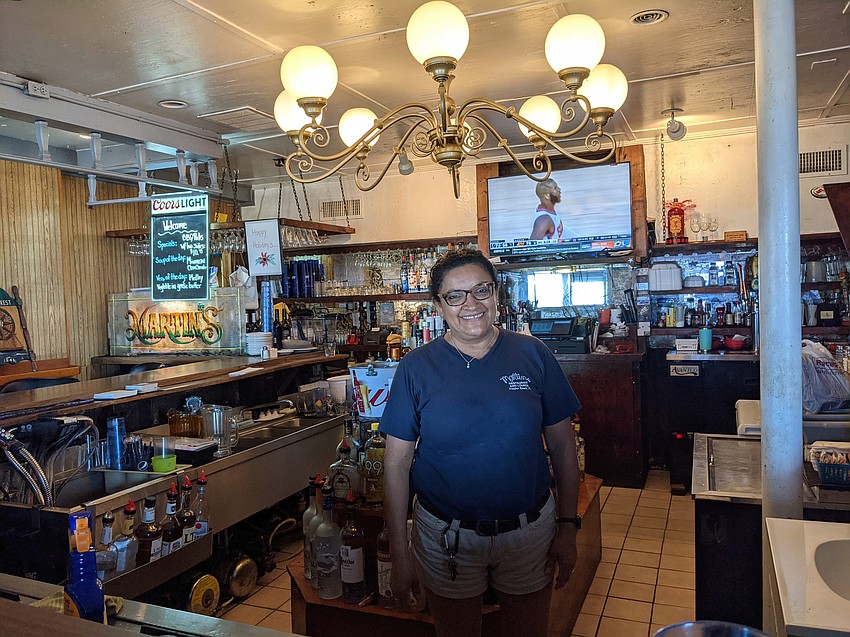
As the building was being remodeled into the current Crave’s Coastal Kitchen & Cocktails, the old chandelier, which was made around 1940, might have been misplaced in the shuffle, damaged or even discarded and lost to history.
The author admired this particular chandelier (beauty is in the eye of the beholder) for many years as a regular customer of Martin’s, and was thrilled to have obtained it and made plans to restore it.
The restoration process included a total hand-painting of the chandelier in a dual color scheme (hammered copper and metallic gold).
A new canopy (the decorative plate that rests against the ceiling and covers the electrical box) was purchased and hand-painted in matching hammered copper color.
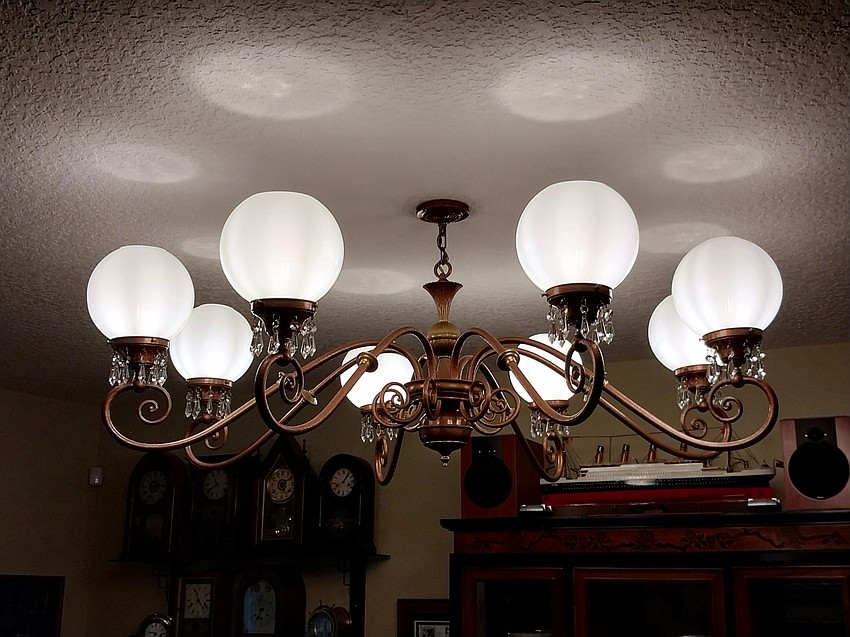
Eighty new clear icicles and octagon bead hanging crystals (10 on each dome mount) were attached.
Believe it or not, one of the more tedious jobs for this restoration was the reconfiguring of the 80 original crystal hanger wires to be able to securely attach each crystal.
Surprisingly, all 80 original crystal hanger wires were still in usable condition. New mounting hardware was also used to ensure the chandelier was securely installed on the ceiling.
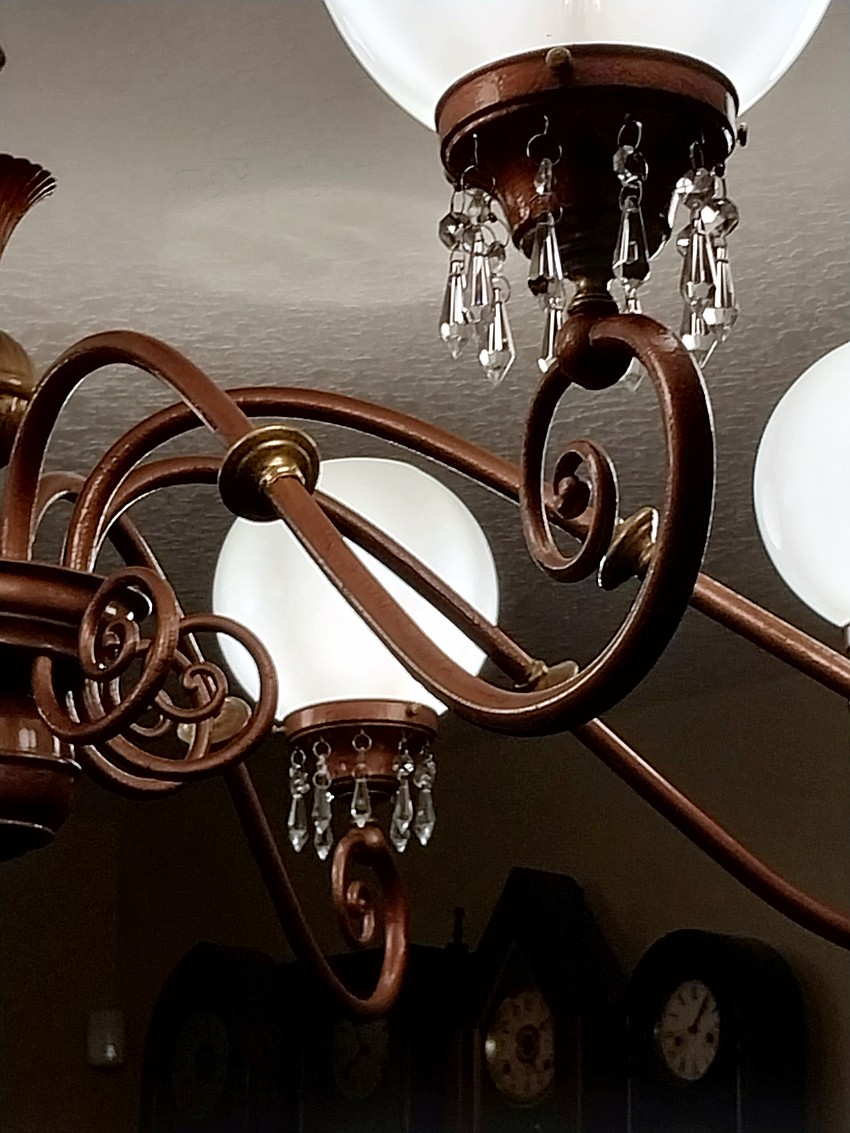
Fortunately, the vintage white milk glass domes were in excellent condition and only needed a good cleaning. A check on the replacement cost of mid-century style white milk glass chandelier domes revealed they are over $100 each. If original mid-century style white milk glass chandelier domes can be located, they are selling for around $200 each.
The chandelier's style is "shaded," and it has a hint of industrial-style features, which were certainly enhanced by the hammered copper and metallic gold color paint scheme.
The chandelier survived many hurricanes and nor’easter storms over the past 80 years, even though it was hanging only several feet from the beach. It also survived in a commercial building for over 80 years that housed at least five different restaurants and bars.
Martin’s opened on March 7, 1986. Prior to Martin’s, the building sat vacant for over two years after the Flying Dutchman Supper Club closed. Other businesses that occupied the building in its past include a Chinese restaurant and a barbecue eatery.
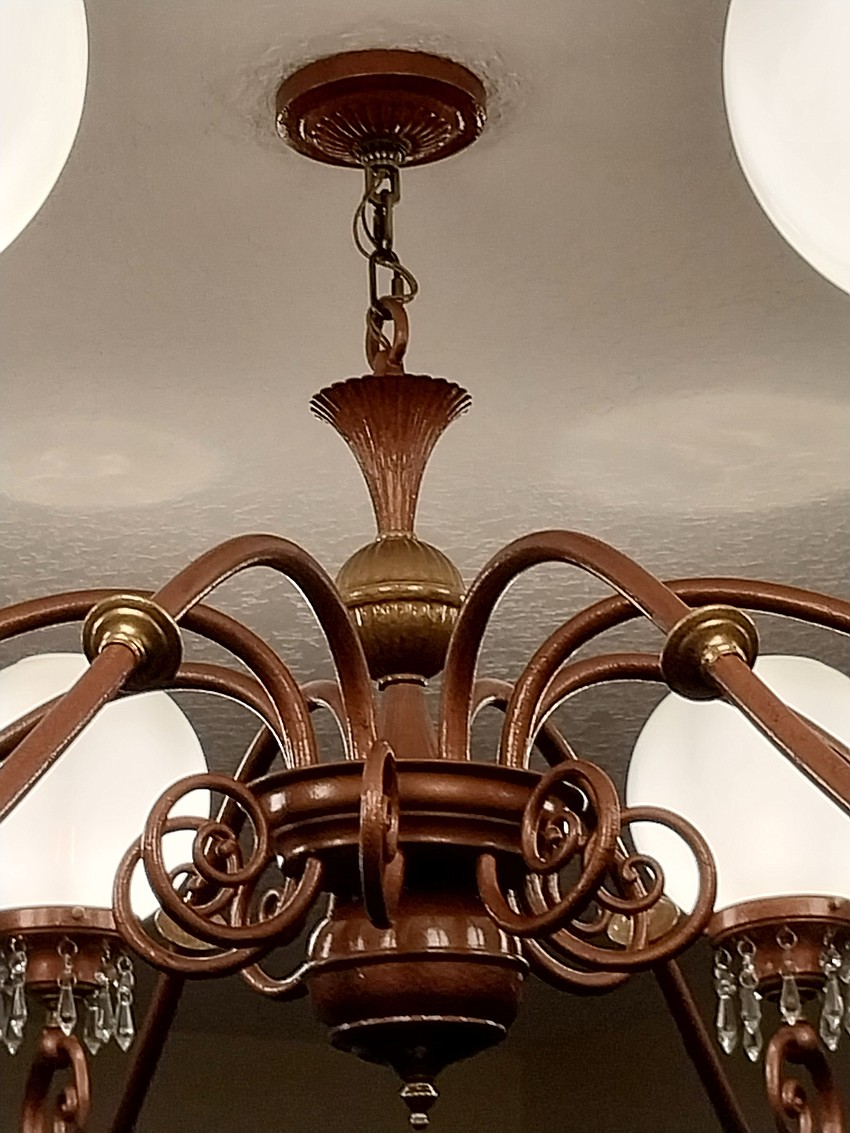
With all of the thousands of customers entering and exiting the premises over the decades spanning from World War II, the Civil Rights era, the Vietnam War, through the COVID-19 pandemic, one can only wonder what stories this chandelier could tell if it could talk.
Today, the restored chandelier hangs in the author’s dining room area in his Flagler Beach home and is providing bright artificial light from modern energy-efficient light-emitting diodes (LED) bulbs.
This unusual chandelier is surely a recognizable piece of Flagler Beach history, and it is well on its way to providing artificial light and eye-catching appeal for the next 80-plus years.
The word chandelier is derived from the French word chandelle, which means candle.
Chandeliers date back to the 15th century, when they were wooden cross structures or flat metal discs suspended from ceilings supporting candles made from animal fat.
At this time, they were predominately used in large buildings such as churches, palaces and castles. By the end of the 15th century, chandeliers evolved into intricate and elaborate designs using expensive materials and represented prosperity, power and luxury, as only the wealthy and noble classes could afford such an item.
From the 16th through the 18th centuries, chandeliers became more affordable, as many working class families had one hanging in their homes.
During the 19th century, chandeliers were in common use in businesses, working-class and wealthy homes.
The widespread popularity of chandeliers, still using candles at this time, was the cause of many fires. Gas was introduced as a safer and alternative source for artificial light, which made the use of candles in chandeliers obsolete.
In the beginning of the 20th century, the growing use of electricity in businesses and homes rendered gas burning chandeliers obsolete.
By the middle of the 20th century, the vast majority of chandeliers were electrified and used light bulbs as the primary source of artificial light.
Today, chandeliers do not conform to a single style as they are made in a vast array of designs, including Rococo ornateness, Art Deco, Neoclassical, Tiffany, Modernism and many more.
Randy Jaye is a historian currently living in Flagler Beach. He recently researched and nominated 4 properties in Flagler County that have been successfully added onto the National Register of Historic Places. He is the author of three recent history books. His fourth book - Florida Prohibition: Corruption, Defiance, and Tragedy is due on the shelves in February 2024. He writes articles for historical journals, local newspapers, magazines, online publications, and has appeared on several radio shows and PBS documentaries. He earned both a master’s degree and a bachelor’s degree from California State University.